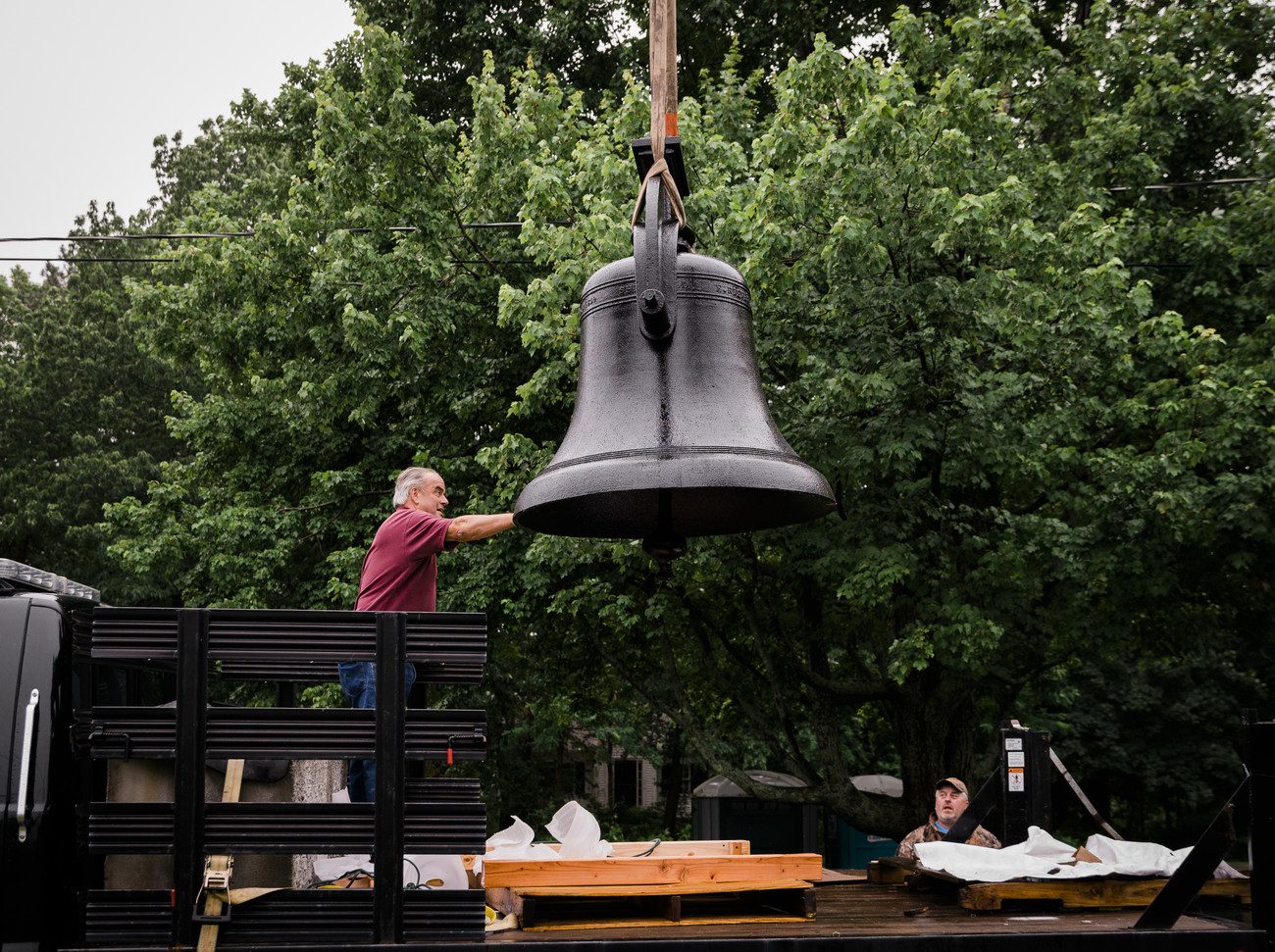LYNNFIELD — Many town residents are familiar with the town’s historic bell, which dates back to 1859 and was used as a fire alarm at the Meeting House from 1903-1960.
Restored last month by Skylight Studios in Woburn, the bell was returned to its home on the Town Common on July 2.
But what most people don’t know is how the bell got there in the first place.
Now, they do, thanks to Historical Commission Chair Kirk Mansfield’s recent discovery of an old letter penned by former Parks and Cemetery Commissioner Donald R. Ross.
“The history of the bell is well known, but for me, how it came to be placed on the common is a more fascinating story,” said Mansfield. “Turns out it was destined for the dump when the town was in the process of tearing down the old Town Hall and building a new one back in the early 1960s. This letter is a tale of how, thanks to Ross, the bell was saved and lives to this day on the common.”
Ross, who served on the commission in the 1960s, wrote the letter to then-President of the Lynnfield Historical Society Edie Richard after reading an article she wrote about the bell, which appeared in a local newspaper in December 2001.
Ross wrote that at the time the old Town Hall was being torn down, there was a row of garages on the back portion of the property that were used by the Parks and Cemetery and Tree departments. Ross said he noticed the bell in the corner of one of those garages, “about to be loaded onto a dump truck to be taken to the dump.”
Ross immediately called Jim Fletcher, the road commissioner. The duo moved the bell to the highway department garage for storage. The letter did not state how two mortals managed to move the bell, which is estimated to weigh 2,500 pounds.
Some time later, Ross had a conversation with Pete Pearson, a former park commissioner, who informed Ross that the foundation of the old Town Hall was made of granite mined from a quarry in South Lynnfield, off Ledge Road.
“As I remember, there were two quarries known as the first and second quarry, as they were in the same area as Nells Hole,” Ross said.
Ross said, “As chairman of the board, I made a motion to place the bell somewhere on the common.”
Ross reached out to Fletcher and together they were able to salvage three pieces of granite from the old foundation.
“Now the plan was to restore the old bell and take two sections of the old foundation and place it on the common where they sit today,” Ross wrote. “We then remounted the old bell on top of the granite.”
It didn’t take long for the bell to become an attractive nuisance for children, who routinely rang it, mostly at night and on weekends.
“This happened so often that the neighbors in the immediate neighborhood complained to the park commissioners,” Ross said.
Ross contacted commercial artist Arthur Holbrook, who designed and mounted a clamp inside the bell to prevent it from being rung.
Ross said the clamp was removed several years later for a period of time for unknown reasons, much to his delight.
“For myself, it was always a joy to hear it ring,” he said.
Mansfield said the exact dates when the old Town Hall was demolished and when the bell was moved to the common as detailed in Ross’ letter is unclear.
“There are a lot of conflicting dates in the Lynnfield (A Heritage Preserved) book that outlines Lynnfield’s history and when the new Town Hall was built,” Mansfield said, adding he believes it was the early 1960s, perhaps 1963.
For Ross, the letter was all about Paul Harvey.
“I feel like Paul Harvey on the radio with his commentary,” he said. “Now, as (he) would say, ‘and now you know the rest of the story.'”

